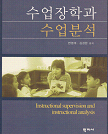수업분석연구실 - 소개 / Class Analysis Lab - Introduction
1. 어디에 쓰이는 프로그램인가요? Where should be this computer program used?
이 프로그램은 컴퓨터를 활용하여 선생님의 수업관찰과 분석을 지원하기 위해 개발된 프로그램으로, 지난 15여년간 전국 교육청의 교육연수원을 통해 200회 이상 교사, 장학사, 교감, 교장선생님의 연수에 사용된 검증된 프로그램입니다. AF(Advanced Flanders) 분석, ACE 분석, 학생 선호 분석, 학생 과업집중 분석, 학생 행동요소별 분석을 주요 내용으로 하고 있으며, 체계적이고 과학적인 분석을 지원하기 위해 데이터베이스를 기반으로 한 인공지능 기법과 시뮬레이션 방식을 제공하고 있습니다. 이 프로그램은 수업기술 향상에 관심이 있는 사람이면 누구나 활용할 수 있으며, 자기 스스로 수업능력을 향상시키고자 하거나, 수업전문가와 함께 체계적으로 수업기술을 획득하고자 할 때 유용하게 사용할 수 있습니다.
This Computer software was developed to support teacher class observation and analysis using a computer, and has been used in the training of teachers, vice principals, and principals more than 200 times over the past 15 years through the Education and Training Institute of the National Education Office. AF (Advanced Flanders) analysis, ACE analysis, student preference analysis, student task concentration analysis, and student behavioral element analysis are the main contents, and database-based artificial intelligence techniques and simulations to support systematic and scientific analysis method is provided. This software can be used by anyone who is interested in improving teaching skills, and it is useful when you want to improve your own teaching skills or to systematically acquire teaching skills with a class expert.
2. 최근 버전과 향후 개발 일정은? The latest version and future development schedule?
1996년(VER 1.0) 개발을 시작으로, 1998년(VER 2.0), 2000년(VER2.8), 2005년(VER3.0), 2006년(VER3.2), 2008년(VER3.4), 2009년(VER3.5)로 업그레이드 되었으며 현재 VER 3.54 beta(2010년)이 최신입니다. 본 프로그램은 현장의 요구를 수용하고 최신의 수업분석 방법을 도입하여 계속적으로 업그레이드 될 예정입니다. 현재는 개발이 잠정적으로 중단된 상태입니다.
Starting with development in 1996 (VER 1.0), 1998 (VER 2.0), 2000 (VER2.8), 2005 (VER3.0), 2006 (VER3.2), 2008 (VER3.4), It has been upgraded to 2009 (VER3.5) and currently VER 3.54 beta (2010) is the latest. This software will be continuously upgraded to accommodate the needs of the field and introduce the latest class analysis method. Currently, development is temporarily halted.
3. 저작권 및 사용 승인은 어떻게 받는가요? How do I get copyright and permission to use this one?
본 소프트웨어의 저작권은 원광대학교 사범대학 김경현(교수)에게 있습니다. 본 소프트웨어의 무단 배포 및 아이디어 도용은 법적 제제를 받습니다(저작권 등록됨). 본 소프트웨어를 2010년 초중등교육법에 의한 교사가 수업기술 개선을 위해 당해 근무 학교에서 사용할 경우 사용료는 무료입니다. 다만, 상업적 목적으로 이용할 시에는 저작권자의 허락을 받아야 하며, 본 프로그램이 상업적 목적에 직접 사용되지 않더라도 상업적 목적을 가진 사이트, 단체의 게시, 배포, 사용은 엄격히 불허합니다.
The copyright of this software belongs to Kyunghyeon Kim (Professor), College of Education, Wonkwang University, South Korea. Unauthorized distribution of this software and theft of ideas are subject to legal sanctions (copyright registered). The use of this software is free when teachers according to the Elementary and Secondary Education Act of 2010 use the software at the school where they work to improve teaching skills. However, when using for commercial purposes, permission from the copyright holder must be obtained, and even if the program is not directly used for commercial purposes, posting, distribution, and use of sites or organizations for commercial purposes is strictly prohibited.
4. 어디서 최신 버전을 다운받을 수 있나요? Where can I download the latest version?
최신 버전은 엄격한 테스트를 거친 후 본 사이트에서 제공됩니다. VER 3.52는 운영체제 WindowsXP 이상의 버전에 한해 지원되며, 실행하고자 하는 컴퓨터의 운영체제를 반드시 확인하시기 바랍니다.
The latest version is provided on this site after rigorous testing. VER 3.52 is supported only for the operating system Windows XP or higher. Be sure to check the operating system of the computer you want to run.
5. 프로그램 활용을 위한 참고 자료를 소개해주세요. Give us reference materials for using this computer program.

- 수업장학과 수업분석(학지사, 2005), 변영계ㆍ김경현 공저
- 이 책에는 플랜더즈 수업분석법, 수업분위기 분석법, 자리이동 분석법, 학생 과업집중 분석법을 포함하여 국내외에 대표적으로 소개되고 있는 수업관찰 및 분석이론에 대해 자세히 소개되어 있습니다.
- Classroom Supervision and Class Analysis (Hakjisa, 2005, Korea), co-authored by Byeon Young-gye and Kim Kyung-hyun
- In this book, class observation and analysis theory, which are representatively introduced at Korea and other countries, is introduced in detail, including Flanders class analysis method, class atmosphere analysis method, seat shift analysis method, and student task concentration analysis method.